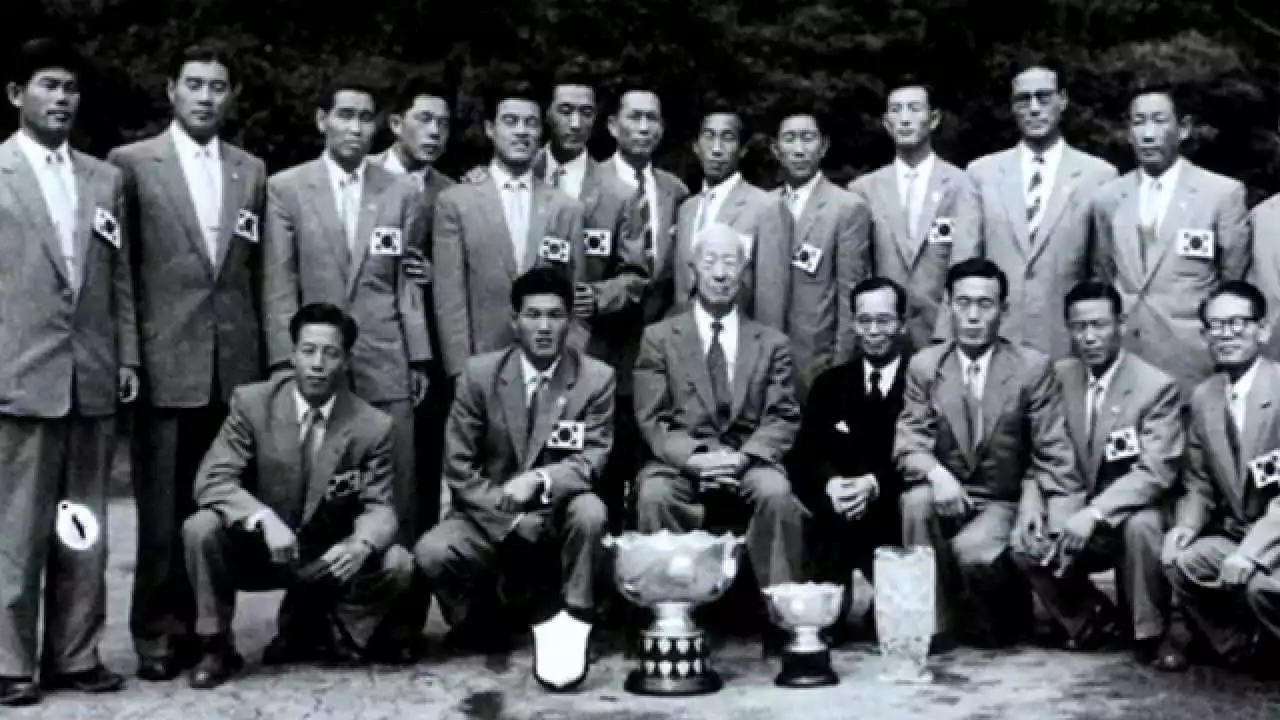Early years: The inception and format of the tournament
The AFC Asian Cup had humble beginnings, starting with just four participating teams in its first edition. The inaugural tournament took place in Hong Kong in 1956, with South Korea emerging as the victors. Back then, the tournament was known as the AFC Asian Nations Cup and was organized by the Asian Football Confederation (AFC) to promote football in the region.
Over the years, the format of the tournament has evolved. In its early years, the AFC Asian Cup followed a round-robin format, where teams played against each other once, and the team with the highest points emerged as the winner. However, as the tournament gained popularity and more teams joined, the format transitioned to a knockout stage followed by a final match to determine the champion. This change allowed for more excitement and tension, making the tournament more captivating for both players and fans.
The AFC Asian Cup also witnessed the introduction of qualifying rounds, where teams had to compete against each other to secure a spot in the tournament. This added another layer of competitiveness and ensured that only the best teams made it to the main event. The expansion of the tournament to include more teams reflected the growing popularity of football in Asia and showcased the region's increasing talent and passion for the sport.
Historical milestones: Memorable moments and records
Throughout its history, the AFC Asian Cup has been home to numerous memorable moments and record-breaking performances. One such moment came in the 1984 edition of the tournament, held in Singapore. Saudi Arabia's victory over China in the final marked their first-ever title, establishing them as a force to be reckoned with in Asian football. This victory marked the beginning of Saudi Arabia's dominance in the tournament, as they went on to win the title two more times in the following years.
Another significant milestone in the tournament's history came in 2007 when it was co-hosted by four nations for the first time – Indonesia, Malaysia, Thailand, and Vietnam. This joint effort showcased the unity and collaboration among Asian countries in organizing such a prestigious event. It also allowed for a greater number of matches to be played, giving fans across the region the opportunity to witness the excitement of the tournament firsthand.
Evolution of the AFC Asian Cup: Changes in format and expansion
Over the years, the AFC Asian Cup has undergone several changes in its format and structure. As mentioned earlier, the tournament started with just four teams, but it has since expanded to include a total of 24 teams in its latest edition. This expansion has not only allowed for a more diverse range of teams to participate but has also increased the level of competition, making each match more intense and thrilling.
In addition to the increase in the number of teams, the tournament format has also evolved. The AFC Asian Cup now consists of a group stage followed by knockout rounds, with the top two teams from each group advancing to the knockout stage. This format ensures that every match is crucial, as teams must perform consistently throughout the tournament to progress and ultimately compete for the title.
Another significant change in the tournament's evolution is the introduction of technology. In recent editions, the AFC Asian Cup has seen the implementation of the Video Assistant Referee (VAR) system, which has helped ensure fair play and accurate decision-making. This technological advancement has added a new dimension to the tournament, allowing for more precise and unbiased officiating.
Host nations and venues: A look at the countries that have hosted the tournament
The AFC Asian Cup has traveled across the continent, with various nations having the honor of hosting the tournament. Each host nation brings its own unique flavor and cultural influence to the event, creating a vibrant and diverse atmosphere for players and fans alike.
One of the most memorable host nations in the history of the AFC Asian Cup is Qatar. In 2011, Qatar hosted the tournament and left a lasting impression with its state-of-the-art stadiums, impeccable organization, and warm hospitality. This edition of the tournament showcased Qatar's commitment to football and its ability to host major international events.
Other notable host nations include Japan, which hosted the tournament in 2000 and 2007, and South Korea, which hosted the event in 1960 and 1988. These countries have not only provided world-class venues for the matches but have also demonstrated their passion for the sport, attracting thousands of football enthusiasts from around the world.
Impact of the AFC Asia Cup on Asian football
The AFC Asian Cup has had a significant impact on the development and growth of football in Asia. The tournament has provided a platform for Asian teams to showcase their skills and compete against some of the best teams in the region. This exposure has helped raise the standard of football in Asia and has given players the opportunity to gain international recognition.
Furthermore, the AFC Asian Cup has acted as a catalyst for the development of football infrastructure in host nations. Countries have invested in building state-of-the-art stadiums, training facilities, and infrastructure to accommodate the tournament, leaving a lasting legacy for their domestic football development.
The tournament also plays a crucial role in promoting unity and fostering cultural exchange among Asian nations. Football has the power to bring people together, transcending borders and language barriers. The AFC Asian Cup provides a platform for fans from different countries to come together and celebrate the beautiful game, fostering a sense of camaraderie and friendship among nations.
Key players and teams: Legends and powerhouse nations in the tournament's history
Over the years, the AFC Asian Cup has witnessed some of the finest footballers in Asia showcase their skills on the grand stage. These players have left a lasting legacy and have become legends in their respective countries.
One such player is Ali Daei from Iran, who holds the record for the most goals scored in the tournament's history. With an impressive tally of 14 goals, Daei's clinical finishing and goal-scoring prowess made him a feared opponent for any defense. His contributions to the Iranian national team's success in the tournament have cemented his status as one of Asia's greatest footballers.
When it comes to powerhouse nations in the AFC Asian Cup, South Korea and Japan are undoubtedly the frontrunners. South Korea has a remarkable record in the tournament, having won the title twice and finishing as runners-up on four occasions. Japan, on the other hand, has also enjoyed success, with four titles and three runner-up finishes. These two nations have consistently produced talented players and have dominated the tournament with their technical prowess and tactical acumen.
AFC Asian Cup trivia: Fun facts and lesser-known details about the tournament
While the AFC Asian Cup has a rich and storied history, there are also some interesting trivia and lesser-known details associated with the tournament. For example, did you know that the first AFC Asia Cup trophy was called the "Challenge Cup"? It was later renamed the "Asian Nations Cup" and eventually became the AFC Asia Cup.
Another fascinating fact is that the AFC Asian Cup has had its fair share of underdog stories. In 2007, Iraq surprised the footballing world by winning the tournament against all odds. Despite the challenging circumstances in their country at the time, the Iraqi team showcased immense resilience and determination, captivating the hearts of fans around the world.
The future of the AFC Asian Cup: Predictions and expectations
As we look to the future of the AFC Asian Cup, there are exciting prospects for the tournament. The continued expansion of the tournament to include more teams reflects the growing interest and participation in football across Asia. This expansion not only provides opportunities for more countries to showcase their talent but also increases the level of competition, making the tournament even more thrilling for fans.
Moreover, the AFC Asian Cup will continue to evolve with advancements in technology and the introduction of new initiatives. The integration of VAR has already made a significant impact on the tournament, ensuring fair play and accurate decision-making. It is likely that further technological advancements will be implemented to enhance the overall experience for players, officials, and fans.
The AFC Asian Cup has come a long way since its humble beginnings in 1956. It has grown into a prestigious tournament that celebrates the passion, skill, and unity of Asian football. The birth of the AFC Asian Cup has left an indelible mark on the region's footballing landscape, and its captivating history will continue to inspire future generations of players and fans.










